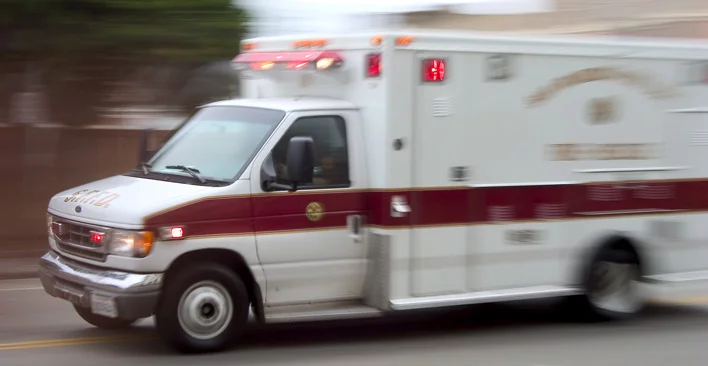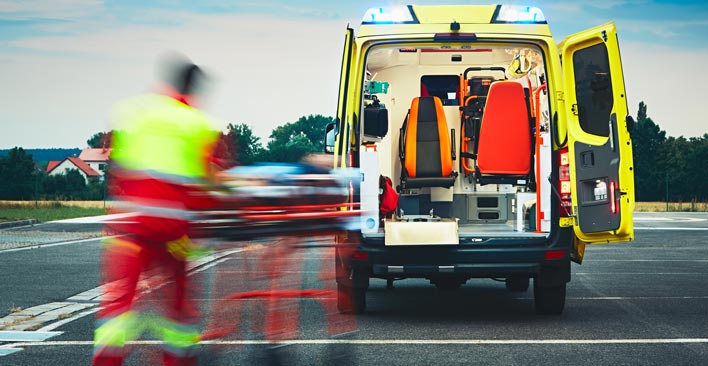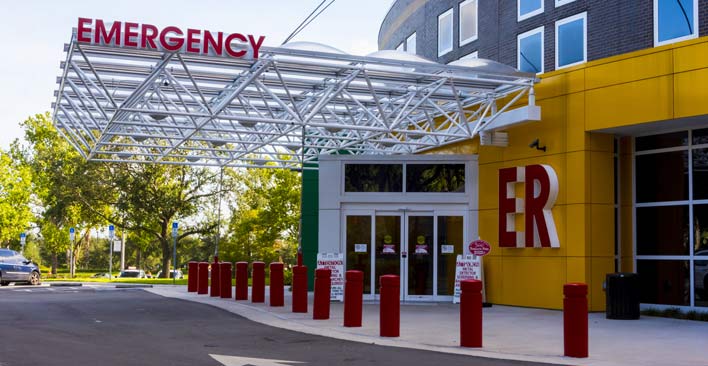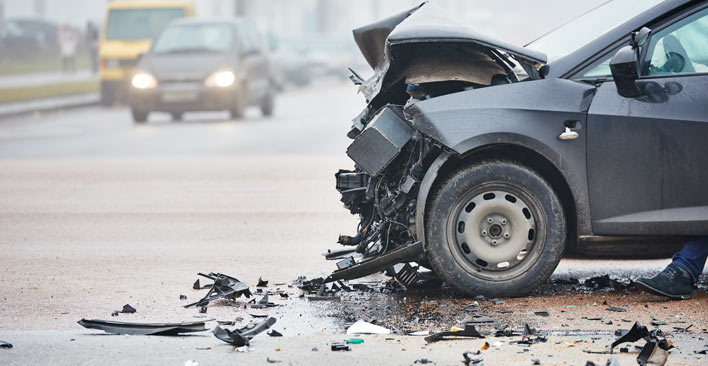Car accident injuries are the most common injuries personal injury law firms like TorkLaw encounter. In 2018, approximately 4.5 million people were seriously injured in traffic accidents in the United States, according to the National Safety Council, and an additional 40,000 lost their lives.
Factors in Car Accident Injuries
There are two main types of car accident injuries:
- Impact injuries when part of an occupant’s body hits part of the car’s interior
- Penetrating injuries caused by shattering glass or objects that penetrate a person’s skin
The severity of car accident injuries can depend on many factors, including:
Whether the person was wearing a seat belt (wearing a seat belt reduces the risk of serious injury by 50 percent).
- Whether the car had airbags that deployed properly.
- Where the car was hit: was it a head-on, side, or rear-end collision?
- The speed the cars were traveling at the time of the collision.
- The position of the occupant(s): were they facing straight ahead, or were their heads or bodies turned in a certain direction?
- The age, height, weight, and gender of the occupants. (For example, women are more likely to be injured in a head-on car accident.)

Car accident injuries can be as varied as the circumstances, but these injuries are the most common:
#1 – Whiplash
When a vehicle is struck in a rear-end collision, the driver’s head will jerk backward, and when the motion stops, snaps forward. The result is whiplash, a form of soft tissue injury that strains the muscles and ligaments in the neck and upper back.
Symptoms of whiplash include pain and stiffness in the neck, mid-back, chest, shoulders, and arms; headaches and dizziness; muscle spasms; jaw pain; hoarseness or difficulty swallowing; fatigue; nausea; and difficulty sleeping. Whiplash can take days, or even weeks to appear, although the sooner symptoms develop, the more serious it usually is.
Whiplash typically heals quickly, but it has been associated with long-term spinal conditions such as osteoarthritis and premature degeneration of the spine.
#2 – Head Trauma
Head trauma is one of the most serious types of car accident injuries; it is often fatal. When vehicle occupants in high-speed collisions strike their heads against steering wheels, dashboards, or windows, the result can be a traumatic brain injury. TBI often requires extensive medical treatment and long-term medical care, especially if the injury results in lasting brain damage.
Types of head injuries people sustain in a motor vehicle collision range from a mild concussion to skull fractures; severe closed head injuries that cause fluid buildup and tissue damage in the brain; comas; lasting cognitive problems; hearing loss; and vision problems. Developing brain injury awareness can help you to recognize the signs of a brain injury.
Symptoms of head trauma may be obvious, such as cuts and bleeding, or they may not be immediately apparent. Anytime vehicle occupants have hit their head in an automobile accident, they should receive medical attention immediately, so a medical professional can determine if there has been a serious injury. Don’t wait for symptoms to appear.
#3 – Spinal Cord Injury
Back injuries also frequently result from automobile accidents. Like head trauma, back injuries can range from pulled muscles to spinal cord damage, and it’s not always easy to tell the difference in the immediate aftermath. However, any spinal cord injury can cause significant nerve damage and limited sensation in and control over arms, hands, legs, feet, and other body parts. A serious spinal cord injury can lead to permanent paralysis (quadriplegia or paraplegia).
Herniated discs are other common car accident injuries. The purpose of the spinal cord discs is to prevent damage to the vertebrae, or spinal cord bones. A violent impact can cause bulging or tearing to these discs, resulting pain, muscle weakness, numbness or tingling sensations in the arms, legs, neck, or back. A herniated disc is less severe than spinal cord damage or head trauma, but can still be a significant problem.

#4 – Bone Fractures
Broken bones are particularly common in high-speed, high-impact collisions. If the car is hit from the side, occupants’ arms and legs may be hurled against the door. A front or rear collision may force an occupant’s knees to hit the dashboard or seats in front of them, which can cause bones to fracture.
Sometimes broken bones are obvious right away, especially if the bone has penetrated the skin or a limb is clearly bent or misplaced, or if there is a loss of function, such as not being able to stand. Even if this is not the case, broken bones can be very painful. However, sometimes the pain is masked by adrenaline, and the person is not aware of the problem right away. Swelling and pain may not appear until later.
Common types of bone fractures in car accidents are broken bones in the arms legs, and ribs. Most of the time, with good medical treatment, these types of broken bones heal in a matter of months with little lasting impact. However, fractures to the hip and pelvis often result in long-term complications. And fractures to the skull and spine are almost always extremely serious, if not catastrophic.
#5 – Internal Injuries
Internal injuries, such as broken ribs, chest trauma, or damage to internal organs may happen when drivers are thrown into the steering wheel, when passengers’ bodies are thrust forcefully against the seat belt, or when occupants are hit forcefully by an object thrown about inside the car. Blunt force trauma can damage internal organs in the chest or abdomen.
Symptoms of internal injury include:
- Severe pain in the chest or abdomen
- Shortness of breath
- Loss of consciousness
- Severe headache
- Low blood pressure
- Dizziness or sudden weakness
- Sudden, acute vision problems
- Numbness
- Nausea or vomiting
If you suspect an internal injury, seek immediate medical attention.
#6 – Soft Tissue Injuries
A soft tissue injury is the most common type of injury resulting from a car accident and can take many forms.
Contusions, or bruises, occur when small blood vessels in or near the surface of the skin are damaged. Bruising can be a minor injury, but severe bruising may indicate internal bleeding and a more serious injury.
Soft tissue damage also includes injury the body’s connective tissue, such as strains, sprains or tears to tendons (which attach muscle to bone), ligaments (which attach bone to bone), or muscles. A common car and motorcycle accident injury is an anterior cruciate ligament (ACL) injury in the knee. ACL damage can be very painful and usually requires immediate surgery.

#7 – Burn injuries
Car accidents may often result in fire, which may severely burn occupants. Chemical burns can happen if a car collides with a commercial vehicle transporting caustic or acidic materials. Burn injuries may require skin grafting or other surgery and may result in painful, disfiguring wounds.
#8 – Psychological Trauma
An extremely common, but often overlooked outcome of a car crash is psychological trauma, or post-traumatic stress disorder (PTSD). Symptoms are depression, anxiety, mood disorders, sleep problems, relationship problems, and fatigue. Serious car crashes can cause emotional distress for those who suffered serious injuries, as well as those who witnessed them. This is a medical issue and should be treated seriously.
Cuts can be caused by flying shards of glass or objects thrown about inside the car, or impact with a part of the car. Scrapes or abrasions occur frequently when an airbag deploys rapidly against the driver’s forearms. Motorcyclists sliding on the road often sustain “road rash,” which is a type of abrasion.
Like bruising, these are primarily skin injuries, but more serious injuries can result in loss of blood and may require stitches or even surgery. They may result in permanent scarring or disfigurement.
If you have received one of these serious car accident injuries in a collision that was not your fault, first, seek immediate medical attention from your doctor or an emergency medical center. When you’re safe, you need to start considering how to handle your car accident case. The most important step will be contacting the experienced team of car accident injury attorneys at TorkLaw. You don’t need to suffer alone, and you may deserve compensation for your injuries. Complete the form on this page, or call us at 888.845.9696.





